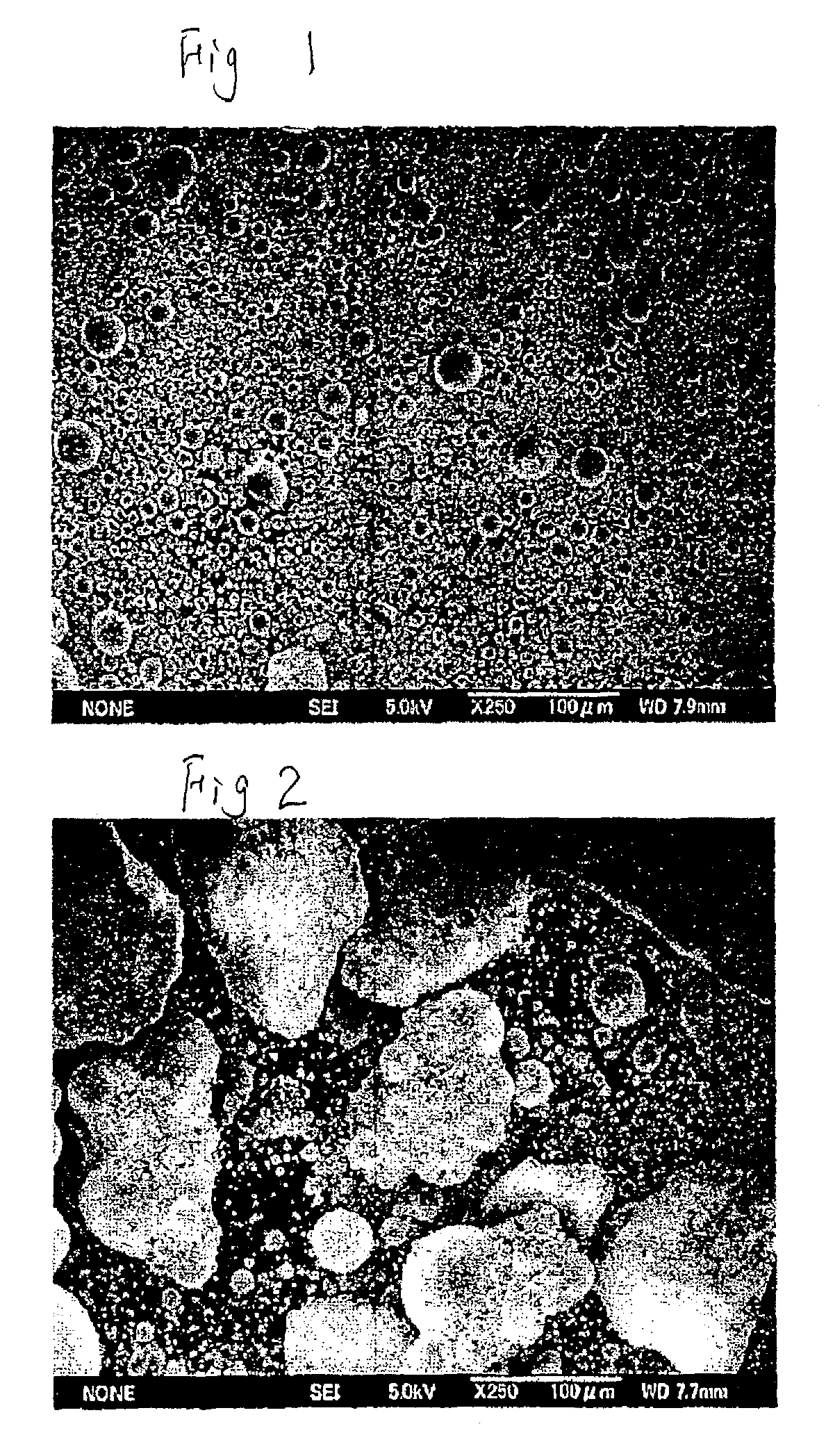Sb-Te alloy powder for sintering, sintered compact sputtering target obtained by sintering said powder, and manufacturing method of Sb-Te alloy powder for sintering
a technology of sintering target and alloy powder, which is applied in the field of sb — te alloy powder for sintering, can solve the problems of cracks or fractures of targets, deterioration of the quality of thin film as recording medium, and large amount of oxygen absorption, so as to reduce the oxygen content of the target and effectively inhibit the generation
- Summary
- Abstract
- Description
- Claims
- Application Information
AI Technical Summary
Benefits of technology
Problems solved by technology
Method used
Image
Examples
example 1
[0063]Ge22.2Sb22.2Te55.6 (at %) alloy raw material was injected with a gas atomizer having a nozzle diameter 2.00 mm φ, argon gas as the injected gas, temperature of 780° C., and pressure of 50 kgf / cm3 in order to manufacture atomized powder (atomized powder was manufactured under the same conditions in the following Examples and Comparative Examples).
[0064]This gas atomized powder was further introduced into a vibratory ball mill, which is machinery used for mechanical pulverization, and subject to mechanical pulverization with inert gas of Ar as the atmosphere gas without any atmospheric exposure. The machine pulverizing time was 30 minutes. The oxygen content after mechanical pulverization was 350 wtppm. Further, the maximum grain size was 39 μm, and homogenous granular powder was obtained.
[0065]The SEM photo (image) of the obtained powder is shown in FIG. 1. The scale of FIG. 1 is as indicated in the diagram. As shown in FIG. 1, clean globular powder was obtained. Incidentally, ...
example 2
[0069]Ge22.2Sb22.2Te55.6 (at %) alloy raw material was injected with a gas atomizer having a nozzle diameter 2.00 mm φ, argon gas as the injected gas, and temperature of 780° C. in order to manufacture atomized powder.
[0070]This gas atomized powder was further introduced into a vibratory ball mill, which is machinery used for mechanical pulverization, and subject to mechanical pulverization with inert gas of Ar as the atmosphere gas. Incidentally, the foregoing powder was exposed to the atmosphere during the refill. The machine pulverizing time was 30 minutes. The oxygen content after mechanical pulverization was 970 wtppm. Further, the maximum grain size was 43 μm, and homogenous granular powder was obtained. Incidentally, the amount of tabular particles was 6%.
[0071]Moreover, this machine-pulverized powder was hot pressed. As a result, the relative density became 100% and the transverse rupture strength became 68 MPa, and a sintered compact (target) with extremely high strength wa...
example 3
[0073]Ge22.2Sb22.2Te55.6 (at %) alloy raw material was injected with a gas atomizer having a nozzle diameter 2.00 mm φ, argon gas as the injected gas, and temperature of 780° C. in order to manufacture atomized powder.
[0074]This gas atomized powder was further introduced into a vibratory ball mill, which is machinery used for mechanical pulverization, and subject to mechanical pulverization with inert gas of Ar as the atmosphere gas. The machine pulverizing time was 10 minutes. The oxygen content after mechanical pulverization was 210 wtppm. Further, the maximum grain size was 85 μm, and homogenous granular powder was obtained. Incidentally, the amount of tabular particles was 2%
[0075]Moreover, this machine-pulverized powder was hot pressed. As a result, the relative density became 100% and the transverse rupture strength became 65 MPa, and a sintered compact (target) with extremely high strength was obtained. No generation of cracks could be acknowledged
[0076]Sputtering was perform...
PUM
| Property | Measurement | Unit |
|---|---|---|
| grain size | aaaaa | aaaaa |
| surface roughness | aaaaa | aaaaa |
| specific surface area | aaaaa | aaaaa |
Abstract
Description
Claims
Application Information
 Login to View More
Login to View More - R&D
- Intellectual Property
- Life Sciences
- Materials
- Tech Scout
- Unparalleled Data Quality
- Higher Quality Content
- 60% Fewer Hallucinations
Browse by: Latest US Patents, China's latest patents, Technical Efficacy Thesaurus, Application Domain, Technology Topic, Popular Technical Reports.
© 2025 PatSnap. All rights reserved.Legal|Privacy policy|Modern Slavery Act Transparency Statement|Sitemap|About US| Contact US: help@patsnap.com

